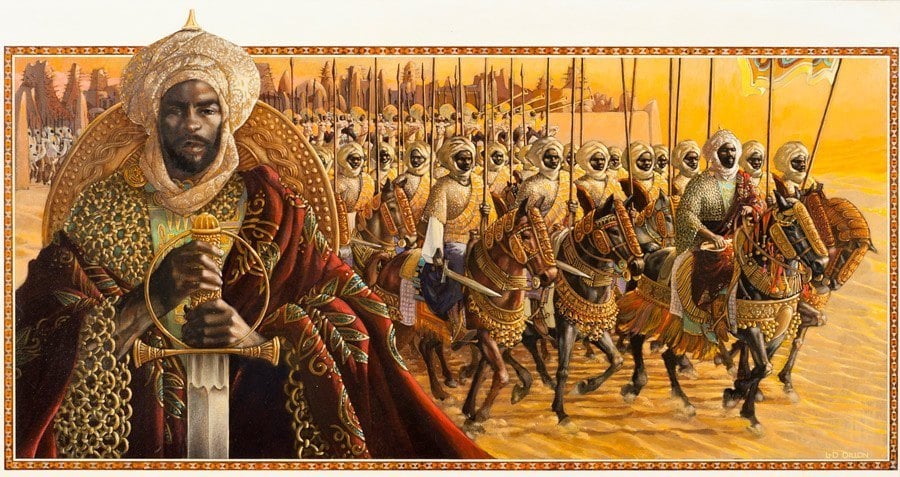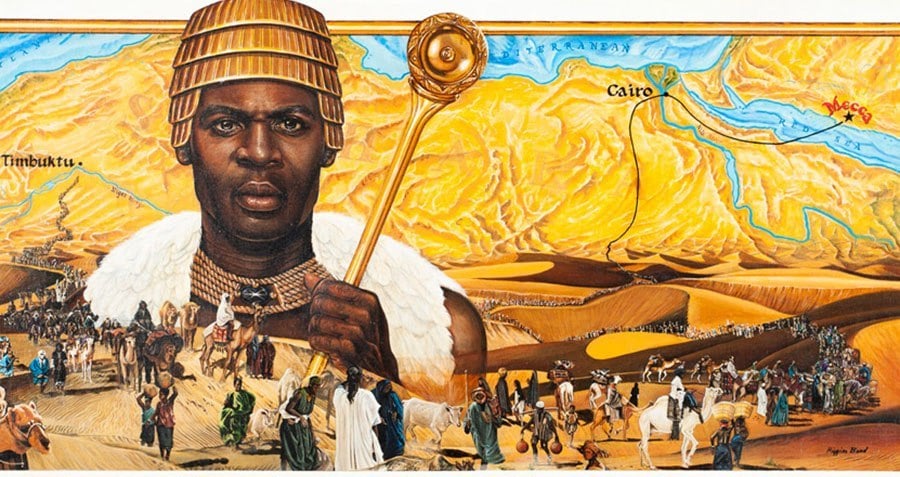African Globe
Forget Rockefeller and Gates — 14th century Malian emperor Mansa Musa is likely the richest person ever.
Imagine how much money the richest person in history would have. Now add a couple hundred billion, and you’ve probably gotten closer to how much wealth Mansa Musa had circa 1324 C.E.
Economists have determined that the West African emperor’s vast wealth most likely positions him as the richest person in history. But just how much money did he have? And what did he do with it?
Mansa Musa’s Start To Becoming The Richest Person Ever
Emperor Mansa Musa I came to reign over the Malian Empire through somewhat strange means.
Before embarking on a long and somewhat arduous pilgrimage to Mecca (called a Hajj in the Muslim religion), then-emperor Abubakari II deputized Musa to temporarily assume his role. An “on-call” emperor was a common feature throughout the history of the empire. It’s somewhat comparable to the modern-day role of a vice president.
This arrangement worked out fine until Abubakari set out to explore the far side of the Atlantic Ocean and never returned. Mansa Musa, then, inherited the throne since he had been deputized. But Musa wasn’t a nobody: His great-uncle was Sundiata Keita, who founded the Malian Empire.
As many a late-night infomercial will tell you, there are lots of ways to attain wealth. Musa got his primarily through trading gold and salt, which were found in abundance in West Africa at the time. He also used the money to strengthen the country’s cultural centers, particularly Timbuktu, which he annexed in 1324.

Flickr
It was when Musa made his Hajj to Mecca — an important part of the Muslim religion, which was very widespread in the region at this point in history — that the rest of the world became aware of the extent of his wealth.
Musa made his pilgrimage between 1324 and 1325. His procession reportedly included 60,000 men, all wearing brocade and Persian silk, including 12,000 slaves, wh each carried 1.8 kg (4 lb) of gold bars, and heralds dressed in silks, who bore gold staffs, organized horses, and handled bags. Musa provided all necessities for the procession, feeding the entire company of men and animals. Thos animals included 80 camels which each carried 23–136 kg (50–300 lb) of gold dust. Musa gave the gold to the poor he met along his route. Musa not only gave to the cities he passed on the way to Mecca, including Cairo and Medina, but also traded gold for souvenirs. It was reported that he built a mosque every Friday
The disruption eventually evened out, in part because Mansa Musa began borrowing from lenders in Cairo (despite the high interest rate) and essentially single-handedly controlled the price of gold in the Mediterranean.
The Lasting Contributions Of Mansa Musa’s Wealth
So what did Mansa Musa do with all the money, aside from giving away bricks to random people in the street and using it to buy souvenirs?
He actually ended up using most of it to build a great number of mosques (legend says he built one every Friday of his reign), the most famous of which is the Djinguereber Mosque. He also commissioned many universities throughout the kingdom — many of which, along with the mosques, are still standing today, some 700 years later.
Musa quite literally put himself, and his empire, on the map when he made this journey — maps from Italian cartographers during his reign had artists add his likeness, holding a nugget of gold of course. He extended the reach of his trade ports and became one of the most powerful rulers of his time — if not in all of history.

Musa ruled for about 25 years according to historian’s best estimates: they believe he died in 1332, at which time his son inherited the throne.
Comprehending The Vast Wealth Of The Richest Person In History
In the spirit of other extremely wealthy people who ultimately become philanthropists, you might wonder how Mansa Musa stacks up against some contemporary billionaires, like Bill Gates, John D. Rockefeller, or Warren Buffett.
When adjusted for inflation, Mansa Musa’s wealth is believed to have been around $400 billion. The only person who comes close to Musa’s wealth is no other but John D. Rockefeller, whom economists believe amassed a worth of around $336 billion.
Of course, Rockefeller wasn’t just in the oil business, he virtually was the oil business. As for Bill Gates, he comes in at several hundred billion below Musa at $136 billion. That’s still a lot of money, but will anything Gates made still be around in 700 years?
In the end, historians and economists find Mansa Musa’s legacy rich not because of how much money he had, but how he used it..
How do you feel about this article? Please leave a comment on the comment box. Thanks.


Very much enlightening
ReplyDelete